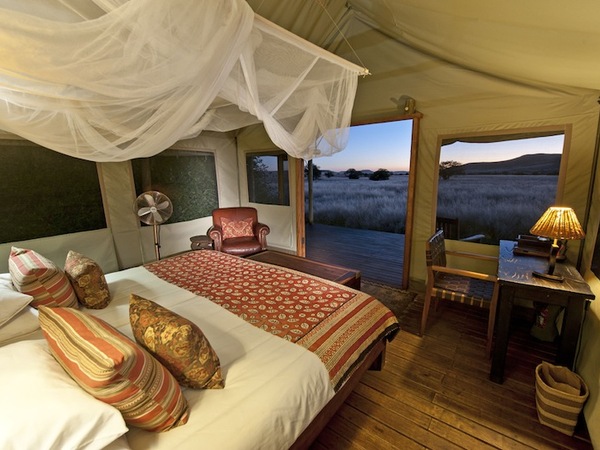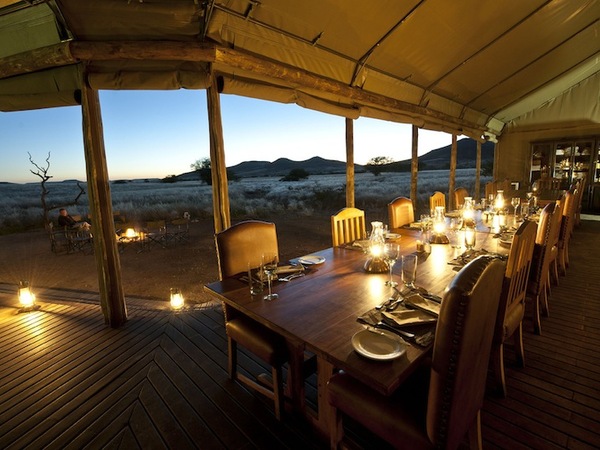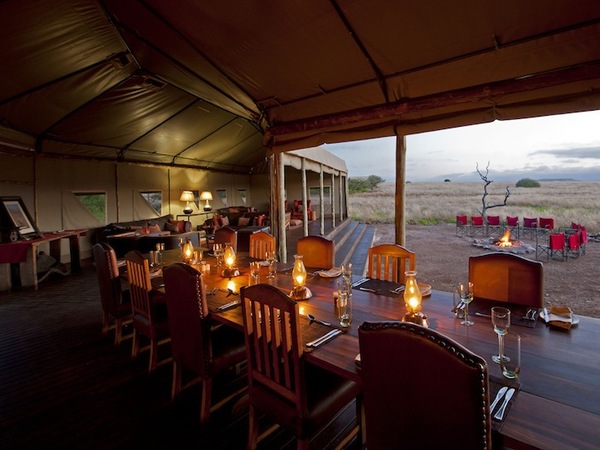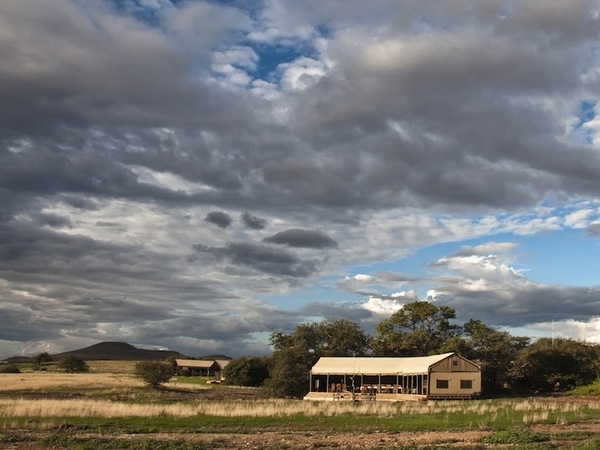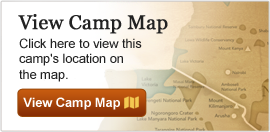Desert Rhino Camp
distinctive Camp | Damaraland, Namibia
| Read Reviews | Write a Review
Desert Rhino Camp offers intrepid explorers one of Africa’s most thrilling and unique experiences: the opportunity to come face to face with the remarkable desert-adapted black rhino in its own natural habitat. Set in the 1.1 million-acre private Palmwag Concession, Desert Rhino Camp is surrounded by the largest free-ranging population of black rhino in Africa. The camp rests among rolling rocky hills and exudes a tranquil, minimalist beauty.

Our Expert Says
When I found out that we would spend our safari days in search of the desert-adapted black rhino—the largest population of free-ranging black rhinos in Africa—I couldn’t believe it! We encountered a wide variety of wildlife around each bend, and it just got better and better. You simply must have the experience of following rhino tracks on foot or by vehicle in your lifetime!
– Court Whelan

The Camp
Location: Damaraland, Namibia
Number of Tents: 8
Desert Rhino Camp is set is in a wide valley that is sometimes flush with grass during seasonal rains. Eight Meru-style canvas tents accommodate a maximum of 16 guests. Raised from the ground on a wooden deck, each tent features an en suite bathroom with double copper hand basins, a flush toilet and a shower. Each bed is dressed with crisp, white linens and features a dark wood partition as the headboard, equipped with reading lamps and separating the bathroom from rest of the tent. An extension of the deck functions as a front veranda where guests can relax in director’s chairs and take in the magnificent vistas of the surrounding desert and Etendeka Mountains. The canvas-sheltered dining and lounge area is on a wooden deck in a single tent with partially open sides, offering panoramic views. Couches invite relaxing on one side, while on the other is other a large, simple dining table. A plunge pool offers respite from the midday heat, and evening meals can be taken by the fire pit, where guests can dine beneath the starry African skies.

Facilities & Amenities
- En suite bathroom with shower
- Shampoo, soap, lotion and insect repellent
- Room fan
- Tea/coffee in room
- 220v charging outlets in room
- In-room safe
- Central plunge pool
- Shared computer with Internet (low bandwidth)
- Laundry included
- Local drinks included (house alcoholic and non-alcoholic drinks)
- Credit cards accepted (Visa and MasterCard)
- No air conditioning, hair dryer, telephone or cellular coverage

Wildlife Viewing & Activities
Desert Rhino Camp is set within the 1.1 million-acre Palmwag Concession among rolling, rocky hills with scattered euphorbia, ancient welwitschia plants, scrubby vegetation and isolated clumps of trees. The region harbors a surprising bounty of desert-adapted wildlife including the largest free-roaming black rhino population in Africa. Activities include rhino tracking on foot or by vehicle, full-day outings with a picnic lunch, birding, and day and night nature drives to explore this intricate and otherworldly ecosystem. Community wildlife scouts serve as trackers and guides and provide guests with amazing insight into the ecology and conservation of this area. The concession's freshwater springs also support healthy populations of desert-adapted elephant, Hartmann's mountain zebra, giraffe, gemsbok, springbok, kudu and predators such as lion, cheetah, leopard, and brown and spotted hyena. Bird life is prolific and diverse with most of Namibia's endemic species present. Raptors include greater kestrel, lanner falcon and booted eagles.
Damaraland has varying concentrations and species of wildlife, and the below chart helps to illustrate major wildlife sightings often experienced in the area. Unique and common sightings in addition to the desert-adapted elephant and rhino may include ostrich, Hartmann’s mountain zebra, springbok, and occasionally predators. Over 240 species of bird thrive here. Exact sightings will depend on water availability and wildlife movements.
| Country | Park/Reserve |
Black Rhino
|
Cheetah
|
Elephant
|
Gemsbok / Oryx
|
Giraffe
|
Greater Kudu
|
Lion
|
Zebra
|
|
|---|---|---|---|---|---|---|---|---|---|---|
| Namibia | Damaraland |
| Usually viewed | Frequently viewed | Occasionally viewed | Sporadically viewed | Rarely to never viewed |
Climate
| Month | Max | Min | Rainfall |
|---|---|---|---|
| January | 64° F | 59° F | 1.77 in |
| 17° C | 15° C | 45 mm | |
| February | 66° F | 61° F | 2.2 in |
| 18° C | 16° C | 56 mm | |
| March | 66° F | 61° F | 2.72 in |
| 18° C | 16° C | 69 mm | |
| April | 64° F | 57° F | 0.91 in |
| 17° C | 13° C | 23 mm | |
| May | 66° F | 55° F | 0.16 in |
| 18° C | 12° C | 4 mm | |
| June | 64° F | 55° F | 0.04 in |
| 17° C | 12° C | 1 mm | |
| July | 63° F | 52° F | 0.12 in |
| 17° C | 11° C | 3 mm | |
| August | 61° F | 52° F | 0.12 in |
| 16° C | 11° C | 3 mm | |
| September | 61° F | 52° F | 0.16 in |
| 16° C | 11° C | 4 mm | |
| October | 69° F | 54° F | 0.51 in |
| 20° C | 12° C | 13 mm | |
| November | 63° F | 54° F | 0.83 in |
| 17° C | 12° C | 21 mm | |
| December | 63° F | 57° F | 0.55 in |
| 17° C | 13° C | 14 mm |

Conservation
Desert Rhino Camp works closely with the Save the Rhino Trust (SRT), a highly respected NGO that is almost single-handedly responsible for the preservation of desert-adapted black rhino in the area. SRT focuses on the protection, monitoring and understanding of the local black rhino population. As the rhino numbers in the area shrank to near extinction, SRT was formed to stop the indiscriminate hunting taking place within the Palmwag Concession. Community wildlife scouts were employed by SRT to help with patrolling and monitoring the remaining rhino. Ironically many of these new scouts were previously convicted poachers from within the local community, and their extensive knowledge of the habits and movements of rhino in the wild has been invaluable to conservation efforts here. About 30 trackers now monitor over 100 desert-adapted black rhino. Today this program is a major success and is responsible for the well being of a unique sub-species of black rhino.
Reviews for Desert Rhino Camp
Review Desert Rhino Camp
